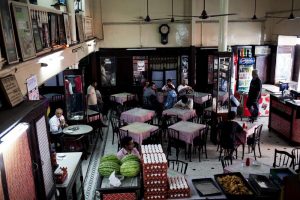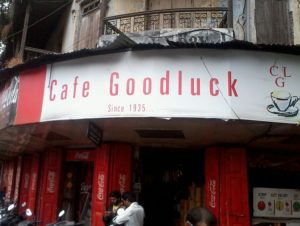The old world charm of Irani Cafes
In the fifties and till the last decade, Irani cafes reached the peak of their popularity. They mushroomed in numbers in cities like Mumbai and Pune. Those days they were found at every nook and corner, often, with gates adjoining to the city’s cinema houses. Frankly speaking, so many generations including mine grew up chatting over chai and bun-maska in these cafes. Around late 19th century, many Iranians left Iran to escape a famine and arrived in Mumbai, Pune in search of a better future. They were counting on help from the successful Parsi community in these cities who had moved to India from Persia over 1000 years ago. Missing home, they would gather every evening and talk about the situation back home, exchange news and updates received from their families back in Iran. Iranians are known for their love for tea, which was indispensable at these conversations. This is how while pondering over ways to earn a livelihood, selling tea seemed like a rewarding idea. And thus the era of the Irani café s was born which served affordable food. They instantly became cosmopolitan hang-outs bustling with young crowds who would throng to these cafes for their brain storming discussions and tete-e-tete.
It’s sad but the fact is that these restaurants have been replaced by Café Coffee Day (CCDs), Barista and Starbucks. And, three are only 25-30 cafes remain in the city of Mumbai. These coffee shops have imitated the business model of Irani cafes in which one could pop in for a quick, affordable meal, or sit for hours, reading the newspaper and listening to the radio over nankatai, khari biscuits and tea. I remember, me and my friends would gather at Café Goodluck on F.C.Road in Pune to listen to Binaca Geetmala (it was a weekly radio countdown show of top filmi songs from Hindi cinema listened to by millions of Hindi music lovers) the show used be hosted by Ameen Sayani who had an unimaginable fan following. He revolutionized the profile of Radio Jockey.
Slowly, the Iranian cafes started closing down because of contemporary problems, rising prices of real estate, inflation and rising overheads the younger Iranians are unwillingness to carry on their family business, and are taking up other vocations. Iranian cafés also started facing competition from modern cafés and fast food restaurants. Many Irani cafes have closed down or are changing into pubs and restaurants or have moved to other cities in India. In the 1950s, in the city of Mumbai there were 350 Irani cafés and today, only 25. One of the most popular eating places is the 102-year-old Kyani Café, which is considered a heritage landmark in south Mumbai
The famous menu of the Irani cafes are ‘bun maska’ (bread and butter) and ‘paani kam chai’ (a strong Iranian tea), or khari chai (very strong tea), mutton samosas, Kheema-Pav, Akuri (a scrambled spicy egg preparation), berry pulao, vegetable puffs, vegetarian/chicken Dhansak (a spicy broth with lentils, pulses) and Biryani, cherry cream custard, cheese khari biscuits, plain khari buscuits, coconut jam and milk biscuits and Dukes Mangola and Raspberry drink. Many of these restaurants are famous for selling the Parsi Bhonu (meal).
The typical ambiance of these cafes have a subtle colonial touch; high ceilings with black, bent wooden chairs, huge wooden or marble tables, designer glass jars and glasses. With huge glass mirrors on the walls that creates a feeling of spaciousness. It used to be like family affair in these restaurants. Visitors would be greeted with eagerness and a whiff of baked food items and the aroma of hot tea. The food would be served fast on tables. The atmosphere would be so welcoming. Bun-maska and chai became synonymous to a sumptuous weekend breakfast over the years for the otherwise idali-sambar, poha and sabudana khichadi loving Mumbaites and Puneites.
I am feeling nostalgic about the good old days spent in those lovely cafes: they were known for good, honest, reasonably priced food and beverages. They were meant for people with modest means. By welcoming everyone, the Irani cafés created a micro environment that was classless and casteless, they were free from societal and religious distinctions and divisions. Some café owners even posted signs saying ‘everyone welcome’ or ‘all castes welcome’. Others displayed religious icons from different religions on their walls. Time has flown by, but the memory and taste of these cafes still lingers on. With the new coffee shops and tea bars people have moved on to another cuppa, elsewhere.
















































